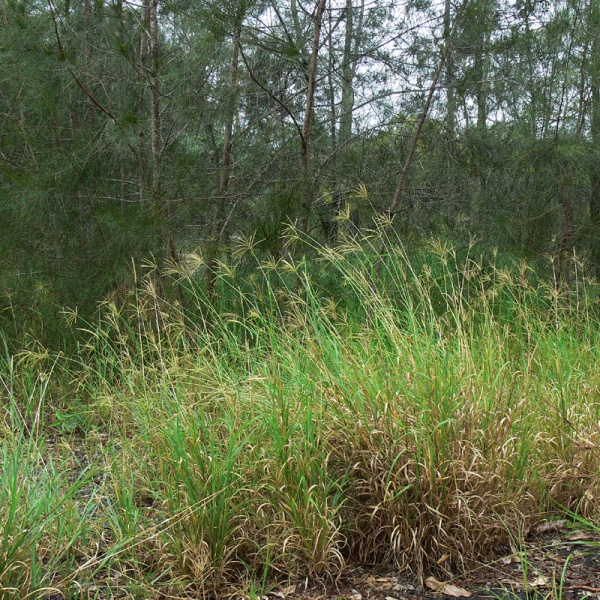Scientific Name: Chloris gayana
-
Pronunciation:CLAW-ris gay-AHN-ah
-
Common Name:Rhodes grass



-
Type:
-
Family:POACEAE
-
Status:WEED This introduced plant has escaped into local bushland. Without natural predators to keep it in check, it is out-competing native species.
-
Species List:Emu Mt., Grass book, AH Collection, Batianoff, Cranks Creek, weeds, NPA Botany 07, Lake Cooroibah
Cultural Notes
It is native of southern and eastern Africa, and was introduced as a pasture grass and as a soil stabiliser.It has a wide tolerance of a range of conditions, but it grows best in tropical and subtropical areas, with an annual rainfall of 600-1600mm. It is relatively drought and salt resistant. It’s ability to invade areas such as rainforest fringes make it a known weed of environmental areas in South East Queensland. It produces 3-4 million seed per kilogran, and can reproduce by a number of methods to smother native ground covers and form almost pure stands. It forms strong runners that rapidly cover the ground surface, anchoring at the nodes and producing plantlets. It also spreads by means of rhizomes.
Identification Notes
It is a tufted perennial grass 60-160cm tall. The nodes are hairless, the leaf sheaths are smooth, hairless, flattened and keeled, the leaf blades are up to 50cm long, almost hairless and taper gradually to a fine point. The ligule is a rim of hairs. The inflorescence consists of 6-15 spikes clusterd at the end of the stem. The spikes are 5-10cm long with numerous spikelets that are green when young and turn copper-brown at maturity.
Landscaping Notes
CONTROL METHODS:


